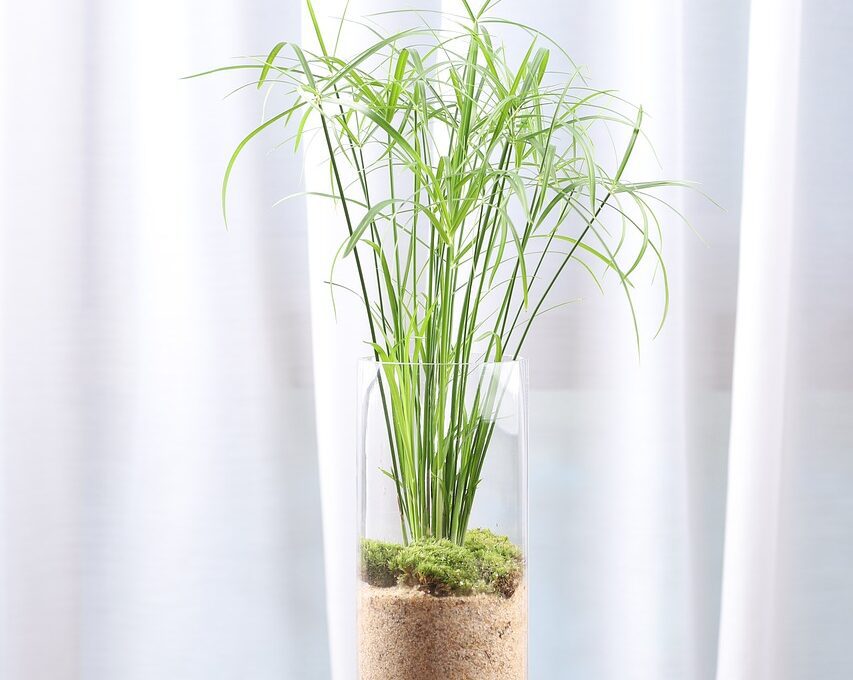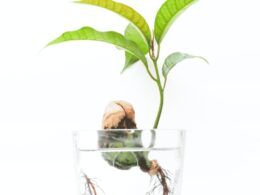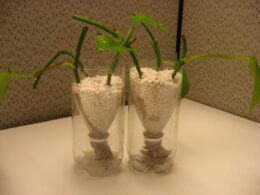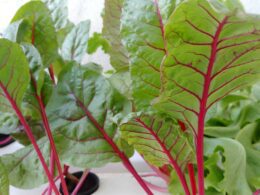If you’re new to hydroponics, one of the most important things you need to know is how much water your system requires. Proper water delivery is essential for healthy plant growth and a successful harvest. When it comes to water flow, the question of how many litres per minute for hydroponics is a common one.
In this article, we’ll explore the factors that affect water requirements, how to calculate them, and best practices for water delivery to ensure your plants thrive.
Water is a critical component of hydroponics. Unlike traditional soil-based gardening, hydroponics relies solely on water and nutrients to feed your plants. Water serves as a delivery system for nutrients, oxygen, and minerals that your plants need to grow.
But it’s not just about the amount of water you provide – the delivery method and timing also play a crucial role. By understanding the factors that impact water requirements and how to monitor and adjust water delivery, you can optimize your hydroponic system for maximum yield and plant health.
So, let’s dive in and explore the world of hydroponic water delivery.
Understand the Importance of Water in Hydroponics
You’ll quickly see how vital water is for your hydroponic system to thrive. Without water, your plants wouldn’t survive, let alone grow.
In hydroponics, water is the medium that delivers nutrients to your plants, making it essential to maintain the right water quality. Water quality is crucial in hydroponics because it can affect the nutrient solution.
Poor water quality can lead to nutrient imbalances or even contamination, which can harm your plants. Therefore, it’s essential to use clean water and check the pH and nutrient levels regularly to ensure they’re optimal for your plants.
In summary, water is the lifeblood of your hydroponic system, and water quality plays a significant role in plant growth. By maintaining clean water and checking nutrient levels, you’ll ensure your plants receive the right nutrients to thrive.
Remember, healthy plants lead to a bountiful harvest.
Factors Affecting Water Requirements
Understanding how much water your hydroponic plants need is influenced by various factors, such as the type of plant, stage of growth, and environmental conditions.
Water is the main vehicle for delivering nutrients to your plants, so the quality of the water is also crucial in ensuring the health and growth of your plants. The nutrient concentration in the water also plays a significant role in determining the amount of water required for your hydroponic system.
Water quality is an essential factor that affects the water requirements of your hydroponic system. The purity and pH levels of the water can impact the nutrient uptake of your plants. A high concentration of dissolved solids in the water can also affect the growth of your plants. Therefore, it’s essential to monitor the quality of the water and make adjustments as needed to ensure that your plants are getting the right amount of nutrients.
The nutrient concentration in the water also influences the amount of water required for your hydroponic system. The higher the nutrient concentration, the less water your plants will need. A low nutrient concentration, on the other hand, will require more water to deliver the necessary nutrients to your plants. Therefore, it’s crucial to maintain the right balance of nutrients in the water to ensure that your plants are getting the right amount of water and nutrients they need for optimal growth.
Calculating Water Requirements
To determine your water consumption rate for hydroponics, you’ll need to consider factors such as the size of your plants and the humidity of your grow room.
Once you have this information, you can adjust your water delivery to ensure that your plants are getting the right amount of water at the right time.
This will help you optimize your yields and keep your plants healthy and strong.
Determining Water Consumption Rate
You’re going to be blown away by how efficient and effective your hydroponic setup can be once you know exactly how much water your plants need and how to control consumption. Determining water consumption rate is crucial to ensuring that your plants receive the right amount of water without wasting any.
Here are some tips on how to do it:
- Monitor the water level in your hydroponic system regularly to track how much water your plants are using.
- Use a flow meter to measure the amount of water being delivered to your plants and adjust the flow rate as needed.
- Consider using a recirculating system that allows you to reuse the water that your plants have already absorbed, reducing overall water consumption.
By using these measuring techniques, you can improve the efficiency of your hydroponic setup and reduce water waste. With a little bit of effort, you can create a sustainable and cost-effective hydroponic system that delivers the perfect amount of water to your plants every time.
Adjusting Water Delivery
Now that you know how to determine your plants’ water consumption rate, it’s time to adjust the delivery to ensure they’re getting just the right amount without wasting any precious H2O.
The first step is measuring flow. You can do this by timing how long it takes to fill up a known volume container from your irrigation system. Once you have that information, you can calculate the flow rate in liters per minute. This will help you understand how much water is being delivered to your plants and if it’s in line with their consumption rate.
The second step is optimizing pressure. If the pressure is too high, your plants may receive too much water and the roots could become waterlogged. If the pressure is too low, your plants may not receive enough water and their growth could be stunted.
You can use a pressure gauge to measure the pressure at different points in your irrigation system. Once you have this information, you can adjust the pressure to ensure it’s within the optimal range for your plants.
By measuring flow and optimizing pressure, you can ensure that your plants are getting just the right amount of water they need to thrive.
Monitoring and Adjusting Water Delivery
Keep an eye on the water delivery and make necessary adjustments to ensure optimal growth for your hydroponic setup. Monitoring the water pressure and flow rate is crucial in controlling the amount of water delivered to your plants.
Too much or too little water can affect the growth and health of your plants, so it’s essential to check the water delivery regularly. To monitor the water delivery, you can use a flow rate meter or a pressure gauge. These tools can help you determine the amount of water that your plants receive per minute.
If the flow rate is too high, you may need to adjust the water delivery system’s valves or reduce the water pressure. On the other hand, if the flow rate is too low, you may need to clean the water delivery system or check for clogs.
Adjusting the water delivery is an ongoing process in hydroponic gardening. It’s essential to keep an eye on the water delivery and make necessary adjustments regularly. By doing so, you can ensure that your plants receive the optimum amount of water they need to grow healthily.
With proper water delivery, you can look forward to a bountiful harvest in your hydroponic garden.
Best Practices for Water Delivery in Hydroponics
To ensure your plants thrive in your hydroponic setup, it’s crucial to follow these best practices for delivering water that will help them grow strong and healthy. Optimal pressure and nozzle size are key factors in finding the right balance for hydroponic water delivery. Here are three things to keep in mind:
-
Don’t overwater your plants. Too much water can lead to root rot, which can kill them. Make sure you’re providing enough water to keep the roots moist, but not so much that the water is pooling around the base of the plant.
-
Use a nozzle that provides a fine mist. This will help ensure that the water is distributed evenly over the plants, without damaging the delicate leaves. A fine mist also helps to keep the humidity level high in your grow space, which can be beneficial for some types of plants.
-
Monitor your water delivery system regularly. Check for any leaks, clogs, or other issues that could be affecting the flow of water to your plants. Make adjustments as needed to ensure that your plants are getting the right amount of water at the right frequency.
By following these best practices for water delivery in hydroponics, you can help ensure that your plants grow strong and healthy. Remember to find the right balance between pressure and nozzle size, avoid overwatering, and monitor your system regularly to catch any issues early on. With a little attention to detail, you can create the perfect environment for your plants to thrive.
Frequently Asked Questions
What type of water should I use for hydroponics?
When it comes to hydroponics, using the right type of water is crucial for ensuring healthy plant growth. Water quality standards are essential, and using purified water is highly recommended.
Purified water has many benefits, including removing any harmful contaminants or chemicals that may harm your plants. Using purified water also means that you can control the nutrient levels more accurately, ensuring that your plants receive the right nutrients in the right quantities.
Overall, using purified water in hydroponics is a safe and effective way to ensure that your plants grow healthy and strong.
Can I reuse water in my hydroponic system?
If you’re looking to reuse water in your hydroponic system, it’s important to consider water treatment and quality. As plants absorb nutrients from the water, the quality can deteriorate over time.
To maintain optimal water quality, it’s recommended to monitor and adjust the pH and nutrient levels regularly. Additionally, using a filtration system can help remove any impurities or contaminants.
Reusing water can be a cost-effective solution, but it’s important to ensure that the water is properly treated and maintained for the health and safety of your plants.
What is the ideal pH level for hydroponic water?
Maintaining the ideal pH level in hydroponic systems is crucial for the growth and health of your plants. Fluctuations in pH can have negative effects on your plant’s ability to absorb nutrients, which can lead to stunted growth and even death.
The ideal pH range for hydroponic water is between 5.5 and 6.5, which is slightly acidic. It’s essential to regularly test and adjust your pH levels to ensure your plants are receiving the proper nutrients they need to thrive.
Remember, the importance of maintaining pH levels in hydroponic systems can’t be overstated. Don’t let pH fluctuations hinder your hydroponic garden’s potential for success.
How often should I change the water in my hydroponic system?
Maintaining clean and optimal water levels in your hydroponic system is crucial to the health and growth of your plants. One common issue you may encounter is an accumulation of algae or other organic matter in the water, which can lead to clogged pipes and reduced oxygen levels. To troubleshoot this issue, regularly clean your system and consider adding a UV sterilizer or hydrogen peroxide to the water.
Another issue to watch out for is pH fluctuations, which can harm your plants and disrupt nutrient uptake. To maintain optimal pH levels, regularly test the water and adjust as needed using pH up or down solutions.
As for changing the water, it’s recommended to do a complete water change every 2-3 weeks to prevent nutrient imbalances and maintain proper oxygenation.
By following these tips for maintaining your hydroponic system’s water levels, you can ensure healthy and thriving plants.
What is the best way to prevent algae growth in my hydroponic system?
To keep your hydroponic system free from algae, there are a number of effective methods you can use. Firstly, it’s important to maintain a clean and sterile environment by regularly changing the water in your system and ensuring that any equipment or surfaces are regularly sanitized.
Additionally, you can use algae inhibitors or natural remedies like hydrogen peroxide or cinnamon to prevent growth. Another effective technique is to introduce algae-eating fish or snails into your system, which can help to keep algae levels under control.
By implementing these algae-free hydroponic techniques, you can ensure that your plants stay healthy and thrive without any unwanted growth or contamination.
Conclusion
Congratulations! You now know how to determine the water requirements for your hydroponic system. Understanding the importance of water in hydroponics and factors affecting water requirements is crucial to ensure the success of your plants.
Calculating the required water delivery rate and monitoring and adjusting it as needed will help you achieve optimal growth and yield. Remember to follow best practices for water delivery in hydroponics, such as ensuring clean and pH balanced water, and avoiding overwatering or underwatering.
With this knowledge, you’re well on your way to becoming a successful hydroponic gardener!









